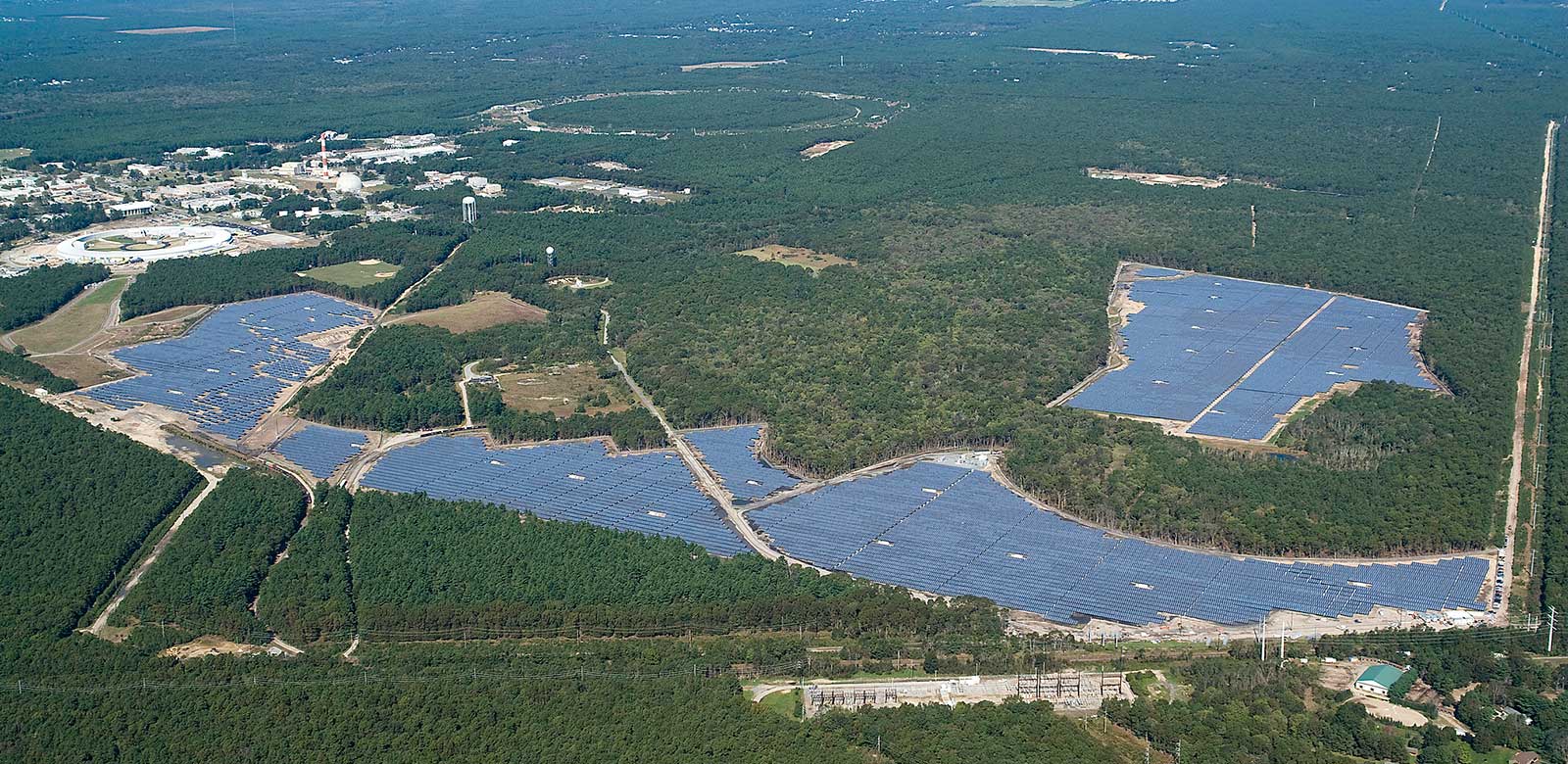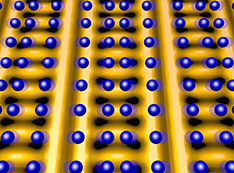
Technologies for Improving Renewable Energy
Scientists at Brookhaven are exploring ways to improve technologies for harnessing renewable energy. These include developing new types of solar cells and characterizing and enhancing their performance, better characterizing the solar energy available for power production, and developing new superconductor-based technologies for harnessing wind power.
Organic (polymer) solar cell materials
Chemists at Brookhaven Lab are exploring the properties of conductive polymers that could serve as an alternative to silicon-based solar cells. These organic solar cells could potentially convert electricity more cheaply than existing solar cells. Their more flexible design might also enable deployment of solar energy generation in remote, off-the-grid locations.
Renewable Energy Tech News
"Invisible" glass for antireflective solar cells
Scientists at Brookhaven’s Center for Functional Nanomaterials have developed a method for patterning the surfaces of glass and silicon with nanoscale features that almost completely eliminate surface reflectivity. Solar cells with such surfaces (which mimic the structure of moths' eyes) can absorb more wavelengths of sunlight and from more angles than ordinary solar cells, resulting in much more efficient energy conversion. These surfaces also have self-cleaning features to keep dust and dirt from interfering with solar energy absorption. Brookhaven Lab has partnered with the startup EdgeHog Technologies to implement this technology on satellites.

"Invisible" glass: a closeup shows how the nanotextured square of silicon completely blocks reflection compared with the surrounding silicon wafer.
Superconducting magnet expertise applied to fusion energy, wind turbines, power generation and distribution
Scientists at Brookhaven Lab have long-standing expertise in developing magnets made of superconducting materials for applications in particle accelerators. These superconducting materials carry electric current with no resistance (i.e., energy lost as heat). Scientists at Brookhaven are exploring potential energy-related applications of both the magnets and the superconducting materials, including fusion energy, high power density wind turbines, high density power generation and distribution systems for aviation. Scientists and engineers at Brookhaven are partnering with the compact fusion industry and using their expertise in high temperature superconducting magnets to develop robust superconducting coil technologies. The successful development of compact fusion would lead to limitless, green energy.
The same team is also using their expertise in accelerator magnet design and power distribution to aid industry in the development of superconducting machines and power systems for both wind turbines and aviation applications. Brookhaven’s magnet division has a long history of partnership with industry and is continuing to look for strong partnerships in this space to help realize the potential role that superconductivity can play in a strong green energy future. Most existing superconductors require extreme cooling to operate. But scientists at Brookhaven are conducting detailed studies to understand the quantum mechanism of so-called “high-temperature” superconductors that require less intensive cooling. This basic research could inform the design of new materials that don’t require costly cooling.

The Long Island Solar Farm (LISF) is a 32-megawatt solar photovoltaic power plant located on the Brookhaven National Laboratory site.
Reliability of solar energy in the Northeast
Brookhaven Lab is home to a 32-megawatt photovoltaic solar array, the Long Island Solar Farm (LISF), which directly feeds the Long Island power grid and keeps 30,950 metric tons of CO2 out of the atmosphere each year. Built by BP Solar, the Long Island Power Authority (LIPA), and the Department of Energy, LISF provides research data for understanding the impacts of renewable variability, cloud shadows, snow, and the Northeastern climate on the local power grid, which will be critical to operating efficiency of solar arrays as well as future solar facility siting and design. The Lab also operates a smaller five-acre research array, the Northeast Solar Energy Research Center (NERSC), which is open to Lab scientists and to academic and industrial partners interested in testing new solar cell designs, as well as inverters, energy-storage systems, and control algorithms.
Capabilities
- Grid modeling and simulation to study the impacts of high penetrations of renewable generation on the power grid
- Application of probabilistic techniques to address the stochastic nature of renewable energy
- Expertise in atmospheric science to develop forecasting techniques
- Characterization of the solar energy resource in the Northeast






